Chapter 3: Philosophical and Historical Foundations of Education in the United States
You may have heard comments implying that education in the United States is not political, separate from religion, and accessible to everyone. The reality is that from its early existence in the New World in the 1600s, it was indeed political, religious, and accessible only to a select few. These traits continue to influence the evolution of education in the United States today.
In this chapter, we will explore how philosophical and historical foundations have shaped the trajectory of education in the United States.
Chapter Outline
Philosophical Foundations
As students ourselves, we may have a particular notion of what schooling is and should be as well as what teachers do and should do. In his book entitled Schoolteacher: A Sociological Study, Dan Lortie (1975) called this the “apprenticeship of observation” (p. 62). Many people who pursue teaching think they already know what it entails because they have generally spent at least 13 years observing teachers as they work. The role of a teacher can seem simplistic because as a student, you only see one piece of what teachers actually do day in and day out. This can contribute to a person’s idea of what the role of teachers in schools is, as well as what the purpose of schooling should be. The idea of the purpose of schooling can also be seen as a person’s philosophy of schooling.
Philosophy can be defined as the fundamental nature of knowledge, reality and existence. In the case of education, one’s philosophy is what one believes to be true about the essentials of education. When thinking about your philosophy of education, consider your beliefs about the roles of schools, teachers, learners, families, and communities. Four overall philosophies of education that align with varying beliefs include perennialism, essentialism, progressivism, and social reconstructionism, which are summarized in Table 3.1.
Table 3.1: Four Key Educational Philosophies
| Educational Philosophy | Purposes & Beliefs |
| Perennialism | Focus on the great ideas of Western civilization, viewed as of enduring value. Focus on developing intellect and cultural literacy. Also called a classical curriculum. |
| Essentialism | Focus on teaching a common core of knowledge, including basic literacy and morality. Believes schools should not try to critique or change society, but rather transmit essential understandings. |
| Progressivism | Focus on the whole child as the experimenter and independent thinker. Believes active experience leads to questioning and problem solving. Approaches textbooks as tools instead of authoritarian sources of knowledge. |
| Social Reconstructionism | Focus on developing important social questions by critically examining society. Recognizes influence of social, economic, and political systems. Believes schools can lead to collaborative change to develop a better society and enhance social justice. |
Perennialism is an educational philosophy suggesting that human nature is constant, and that the focus of education should be on teaching concepts that remain true over time. School serves the purpose of preparing students intellectually, and the curriculum is based on “great ideas” that have endured through history. See the following video for additional explanation.
Essentialism is an educational philosophy that suggests that there are skills and knowledge that all people should possess. Essentialists do not share perennialists’ views that there are universal truths that are discovered through the study of classic literature; rather, they emphasize knowledge and skills that are useful in today’s world. There is a focus on practical, useable knowledge and skills, and the curriculum for essentialists is more likely to change over time than is a curriculum based on a perennialist point of view. The following video explains the key ideas of essentialism, including the role of the teacher.
Progressivism emphasizes real-world problem solving and individual development. In this philosophy, teachers are more “guides on the sides” than the holders of knowledge to be transmitted to students. Progressivism is grounded in the work of John Dewey[1]. Progressivists advocate a student-centered curriculum focusing on inquiry and problem solving. The following video gives further explanation of the progressivist philosophy of learning and teaching.
The final major educational philosophy is social reconstructionism. Social reconstructionism theory asserts that schools, teachers, and students should take the lead in addressing social problems and improving society. Social reconstructionists feel that schooling should be used to eliminate social inequities to create a more just society. Paulo Freire[2], a Brazilian philosopher and educator, was one of the most influential thinkers behind social reconstructionism. He criticized the banking model of education in his best known writing, Pedagogy of the Oppressed. Banking models of education view students as empty vessels to be filled by the teacher’s expertise, like a teacher putting “coins” of information into the students’ “piggy banks.” Instead, Freire supported problem-posing models of education that recognized the prior knowledge everyone has and can share with others. Conservative critics of social reconstructionists suggest that they have abandoned intellectual pursuits in education, whereas social reconstructionists believe that the analyzing of moral decisions leads to being good citizens in a democracy.
PAUSE & PONDER
Take some time to answer the questions in this survey to see where your philosophical beliefs align with progressivism, perennialism, essentialism, or existentialism. What did you learn about your own philosophical views? How will these impact your future classroom?
Historical Foundations
Where did these philosophies originate? To examine this question, we now turn to the historical foundations of education in the United States. Education as we know it today has a long history intertwined with the development of the United States. In this section, we will follow historical events through key periods of U.S history to see the forces that left lasting influences on education in the United States.
Colonial America
(Note: If you are using a downloaded version of this text and cannot load the interactive timelines throughout this chapter, please turn to Appendix A to see image versions of these timelines.)
Public education as we know it today did not exist in the colonies. In the First Charter of Virginia in 1606, King James I set forth a religious mission for investors and colonizers to disseminate the “Christian Religion” among the Indigenous population, which he described as “Infidels and Savages.” His colonial and educational mission would impact settlement and education in America for centuries. Next, we will explore how education began evolving in Puritan Massachusetts and the Middle and Southern Colonies during the colonial period.
Puritan Massachusetts
Puritans in Massachusetts believed educating children in religion and rules from a young age would increase their chances of survival or, if they did die, increase their chances of religious salvation. Puritans in Massachusetts established the first compulsory education law in the New World through the Act of 1642, which required parents and apprenticeship masters to educate their children and apprentices in the principles of Puritan religion and the laws of the commonwealth. The Law of 1647, also referred to as the Old Deluder Satan Act, required towns of fifty or more families to hire a schoolmaster to teach children basic literacy. Because of similar religious beliefs and the physical proximity of families’ residences, formal schooling developed quickly in the commonwealth of Massachusetts. Connecticut, New York, and Pennsylvania followed in Massachusetts’ footsteps, passing similar laws and ordinances between the mid- and late-seventeenth century (Cremin, 1972).
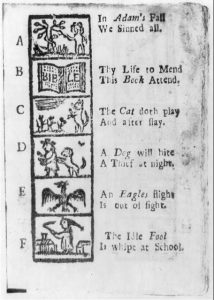
During this time, children learned to read at home using the Holy Scriptures and catechisms (small books that summarized key religious principles) as educational texts. The primers that were used “contained simple verses, songs, and stories designed to teach at once the skills of literacy and the virtues of Christian living” (McClellan, 1999, p. 3).
The importance of faith, prayer, humility, rewards of virtue, honesty, obedience, thrift, proverbs, religious stories, the fear of death, and the importance of hard work served as major moral principles featured throughout the texts. When Indigenous people were depicted or mentioned in texts, they were portrayed as “savages and infidels,” needing salvation through English cultural norms.
Another form of education occurred in dame schools. Where available, some parents sent their children to a neighboring housewife who taught them basic literacy skills, including reading, numbers, and writing. Because families paid for their children to attend dame schools, this form of education was mainly available to middle-class families. Teaching aids and texts included Scripture, hornbooks, catechisms, and primers (Urban & Wagoner, 2009).
More expensive than dame schools, Latin grammar schools were also available. The first Latin grammar school was established in Boston in 1635 to teach boys subjects like classical literature, reading, writing, and math at what we would consider the high school level today in preparation to attend Harvard University (Powell, 2019).
The Middle and Southern Colonies
In Virginia, the Carolinas, and Georgia, town or village schooling was not as common. Their populations were sparser, and they focused more on economic opportunities for survival than religion. Education was considered a private matter and a responsibility of individual parents, not the government. Schooling was seen as a service that should be paid by the users of that service, creating a stratified system of education where wealthy families had access to schooling and others did not. Wealthier parents often sent their children to English boarding schools or paid for private schooling in the colonies. Wealthy families also sent their children to parson schools, operated by a highly educated minister who opened his home to young scholars and often taught secular subjects. Education for the poor was usually limited to the rudiments of basic literacy learned in the home or occasionally at church.
Charity schools, often referred to as “endowed ‘free’ schools” (Urban & Wagoner, 2009), were occasionally established when an affluent individual made provisions in his or her will, including land, to construct and manage a school for the poor. In addition, field schools were occasionally built in rural areas. Named after the abandoned fields in which they were built, these schoolhouses offered affordable education to students. The teacher’s salary came from fees students’ families paid, and teachers often boarded with a local family while serving a field school. These schools were also called rate schools, subscription schools, fee schools, and eventually district schools (Urban & Wagoner, 2009).
In Colonial America, education in the mid-Atlantic and southern colonies was heavily stratified and remained out of reach for most inhabitants. New England Puritans worked hard to establish schools. Fear, anxiety, and the struggle for survival lent urgency to their quest for cultural transmission, which helps us understand their desire for formal schooling. Table 3.2 summarizes the main forms of schooling in Colonial America.
Table 3.2: Forms of Schooling in Colonial America
| New England | Middle and Southern Colonies |
|
|
PAUSE & PONDER
Even though today’s public schools operate separate from religion, the first schools in the U.S. had strong ties to religion. Where do you see those roots still in action today, even implicitly?
American Revolutionary Era
After the American Revolution, our new country was establishing its systems and identity. Many key Founders believed public education was a prerequisite in a republic. Three groups had distinct post-revolutionary plans for education and schooling, all of which were intended to serve as part of the founding process: Federalists, Anti-Federalists, and the lesser known Democratic-Republican Societies.
Federalists
Alexander Hamilton, George Washington, and John Adams, among other Federalists, focused on building a new nation and a new national identity by following the new Constitution, which consolidated power in a new federal government. The Federalists supported mass schooling for nationalistic purposes, such as preserving order, morality, and a nationalistic character, but opposed tax-supported schooling, viewing it as unnecessary in a society where elites rule.
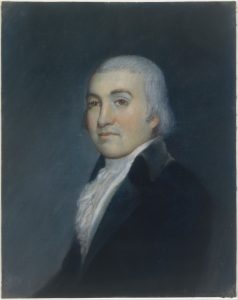
Noah Webster was one of the great advocates for mass schooling, and the purposes for which he supported schooling included teaching children not just “the usual branches of learning,” but also “submission to superiors and to laws [and] moral or social duties.” Smoothing out the “rough manners” of frontier folk was very important to Webster. Furthermore, Webster placed great responsibility among “women in forming the dispositions of youth” in order to “control…the manners of a nation” and that which “is useful” to an orderly republic (Webster, 1965, 67, 69-77). Webster’s treatise on education and his spellers (like his 1783 American Spelling Book) were intended to develop a literate and nationalistic character to shape useful, virtuous, and law-abiding citizens with strong attachments to Federalist America.
Anti-Federalists
Anti-Federalists, on the other hand, were opposed to a strong central government, preferring instead state and local forms of government. The Anti-Federalists believed that the success of a republican government depended on small geographical areas, spaces small enough for individuals to know one another and to deliberate collectively on matters of public concern. Anti-Federalists feared concentrated power.
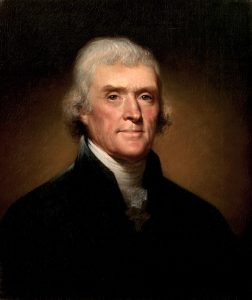
Thomas Jefferson was an Anti-Federalist. An aristocrat whose genteel lifestyle was bolstered by his violent oppression of enslaved people, Jefferson put forth proposals to educate all white citizens in the state of Virginia. Jefferson proposed a system of tiered schooling. The three tiers were primary schools, grammar schools, and the College of William and Mary. The foundation of his tiered schooling plan included three years of tax-supported schooling for all white children with limited options for a few poor children to advance at public expense to higher levels of education. While he suggested very limited educational opportunities for women, no other key Founder advocated giving high-achieving scholars from poor families a free education. Religion was not a core curricular area in the primary and grammar schools. However, his plans were viewed as too radical by his aristocratic peers, and they correspondingly rejected his state education proposals.
Democratic-Republican Societies
The third group of post-revolution political activists formed several clubs broadly described as the Democratic-Republican Societies during the 1790s. Members of these political clubs included artisans, teachers, ship builders, innkeepers, and working class individuals. They generally supported universal, government-funded schooling, not simply to secure allegiance and order, but also to develop democratic citizen virtue and venues for deliberative learning and opportunities for dissent. The Democratic-Republican Societies viewed education as a means to prepare active citizens for new civic roles, and they considered the government responsible for providing positive benefits to individuals to realize a more fulfilling citizenship through venues such as education.
Table 3.3 summarizes the key differences among these three political groups and how they related to their views of education.
Table 3.3: Federalist, Anti-Federalist, and Democratic-Republican Stances
| Federalists | Anti-Federalists | Democratic-Republican |
| Support strong central government via the new Constitution | Support a decentralized system of governing: states and local governance | Support a decentralized system of governing: states and local governance |
| Maintain social and economic status quo | Accept limited structural change in order to develop economic and political independence among individuals | Accept structural changes in order to develop economic and political independence among individuals |
| Support publicly funded school systems to develop and maintain strong inner moral values based on Christianity and patriotic adherence to the nation-state; order and harmony are emphasized | Support public school systems detached from religious institutions and a greater focus on the use of individual reason; preparation for limited political participation at the local level; three years of primary schooling available to all white children at public expense with opportunities for male scholars from poor families to advance | Support universal public schooling throughout the United States at public expense; curriculum expected to focus on some form of critical analysis of the status quo and preparing citizens to be active in democratic governance |
Pause & Ponder
Where do we see elements of these different ideologies in today’s schools? What has remained and what has changed? What approach do you see as the most valuable in terms of today’s public schools?
Early National Era
During the early- to mid-nineteenth century, the United States was expanding westward, and urbanization and immigration intensified. This period of history was defined by the emergence of the common school movement and normal schools, though conflicts over the organization and control of education continued. This period also saw the advent of higher education.
The Common School Movement
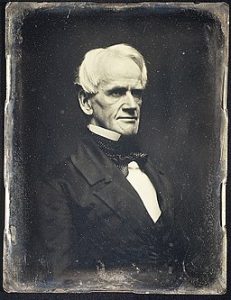
Common schools were elementary schools where all students–not just wealthy boys–could attend for free. Common schools were radical in their status as tax-supported free schooling, but their conservative-leaning curriculum addressed traditional values and political allegiance. Schooling offered increasing opportunities for families’ children, especially working-class families, by teaching basic values including honesty, punctuality, inner behavioral restraints, obedience to authority, hard work, cleanliness, and respect for law, private property, and representative government (Urban & Wagoner, 2009). Horace Mann, Massachusetts’s first Secretary of Education and Whig (formerly Federalist) politician, was the leader of the common school movement, which began in the New England states and then expanded into New York, Pennsylvania, and then into westward states.
The Development of Normal Schools
With the rise of common schools, Horace Mann then turned to how female teachers would be educated. For Mann, the answer was to create teacher training institutions originally referred to as normal schools. A French institution dating back to the sixteenth century, école normale was the term used to identify a model or ideal teaching institute. Once adopted in the United States, the institution was simply called a normal school.
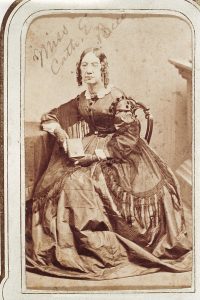
The first normal school in America was established in Lexington, Massachusetts in 1839 (now Framingham State University). They were primarily used to train primary school teachers, as middle and high schools did not yet exist. The curriculum included academic subjects, classroom management and school governance, and the practice of teaching. Teacher credentialing began and was regulated by state governments. Moreover, this contributed to the professionalization of teaching, and normal schools eventually became colleges or schools of education. Many normal schools eventually became full-fledged liberal arts and research institutes. Catherine Beecher was the first well-known teacher of the time and one of the normal schools’ first teachers.
Because the teaching profession was being feminized, administrators and policymakers viewed this as an opportunity. Men were exiting the profession, and women were typically paid much less, allowing more women to be hired for less money to educate the growing ranks of students as common schools spread westward. Furthermore, once the profession was feminized, teaching became perceived as a missionary calling rather than an academic pursuit. While male policymakers insisted women were better nurturers and more suited to teaching morality and correct behavior in children, framing the discourse of teaching around a calling helped rationalize lower pay for women and fewer advancement possibilities.
PAUSE & PONDER
How do you see the early roots of feminizing the teaching profession still in effect today?
Conflicts in the Common School Movement
The common school movement was not without its conflicts. Whigs (formerly Federalists), including Horace Mann, sought to establish state systems of schooling in order to create standardization and uniformity in curricula, classroom equipment, school organization, and professional credentialing of teachers across state schools. Democrats, however, often supported public schooling but feared centralized government, thus opposing the centralization of local schools under the common school movement. The battle between Whigs and Democrats during the nineteenth century represents one of the initial conflicts related to public schooling.
Another important conflict related to the common school movement was the clash between urban Protestants and Catholics. Typically from Protestant backgrounds, common school reformers continued to use the Bible as a common text in classrooms without considering the potential conflict this could generate in diverse communities. Horace Mann advocated using only generalized Scripture in order to prevent offending different sects. However, what appeared to Protestants as a generalization of Christian text was actually very insulting to Catholic immigrants, who were becoming the second largest group of city dwellers at the time. Protestants realized that it was best to reduce the religious content in the common school curriculum, but unhappy Catholic leaders created their own private parochial schools. This conflict generated a greater theoretical acceptance of the separation of church and state doctrine in publicly-funded common schools, though in practice, common schooling continued to infuse Protestant biases for over a century.
Common schools also faced conflict in Southern states, including Jefferson’s Virginia, until after the Civil War. Planters had no interest in disturbing the status quo by educating poor whites or enslaved people. Driven by Southern aristocracy, education continued to be viewed as a private family responsibility and class privilege. In fact, many southern states prohibited educating enslaved people and passed state statutes that attached criminal penalties for doing so, such as the ones below.
| Excerpt from a 1740 South Carolina Act:
Whereas, the having slaves taught to write, or suffering them to be employed in writing, may be attended with great inconveniences; Be it enacted, that all and every person and persons whatsoever, who shall hereafter teach or cause any slave or slaves to be taught to write, or shall use or employ any slave as a scribe, in any manner of writing whatsoever, hereafter taught to write, every such person or persons shall, for every such offense, forfeit the sum of one hundred pounds, current money.
|
Excerpt from Virginia Revised Code of 1819:
That all meetings or assemblages of slaves, or free negroes or mulattoes mixing and associating with such slaves at any meeting-house or houses, &c., in the night; or at any SCHOOL OR SCHOOLS for teaching them READING OR WRITING, either in the day or night, under whatsoever pretext, shall be deemed and considered an UNLAWFUL ASSEMBLY; and any justice of a county, &c., wherein such assemblage shall be, either from his own knowledge or the information of others, of such unlawful assemblage, &c., may issue his warrant, directed to any sworn officer or officers, authorizing him or them to enter the house or houses where such unlawful assemblages, &c., may be, for the purpose of apprehending or dispersing such slaves, and to inflict corporal punishment on the offender or offenders, at the discretion of any justice of the peace, not exceeding twenty lashes. |
Enslaved people have often been depicted in American history textbooks as passive toward their owners. This is a misrepresentation of history. African Americans escaped, committed espionage on plantations, negotiated statuses, and occasionally educated themselves behind closed doors. For enslaved people, education and knowledge represented freedom and power, and once they were emancipated, they continued their relentless quest for learning by constructing their own schools throughout the South, even with minimal resources. Unlike many free whites, African Americans placed an exceptional value on literacy due to generations of bondage.
CRITICAL LENS: WORDS MATTER
You will notice in this chapter that we use the term “enslaved person” instead of “slave.” Part of critical theory involves questioning existing power structures, even in word choice. Recently, academics and historians have shifted away from using the term “slave” and have begun replacing it with “enslaved person” because it places “humans first, commodities second” (Waldman, 2015, para. 2).
Even while slavery continued throughout the South, segregation continued in the North. One of the first challenges to segregation occurred in Boston, Massachusetts. Benjamin Roberts attempted to enroll his five-year-old daughter, Sarah, in a segregated white school in her neighborhood, but Sarah was refused admission due to her race. Sarah attempted to enroll in a few other schools closer to her home, but she was again denied admission for the same reason. Mr. Roberts filed a lawsuit in 1849, Sarah Roberts v. City of Boston, claiming that because his daughter had to travel much farther to attend a segregated and substandard black school, Sarah was psychologically damaged. The state courts ruled in favor of the City of Boston in 1850 because state law permitted segregated schooling. This case would be cited in Plessy v. Ferguson in 1898 and in Brown v. Board of Education in 1954.
Higher Education in the Colonies and Antebellum America
Colleges throughout the eastern seaboard states and former colonies served as symbols of elite education. These institutions developed throughout the North, Mid-Atlantic, and southern states, often subsidized by state legislatures. Religious sects competed to establish colleges in multiple states in hopes of garnering more adherents to their respective sects. Baptists, Catholics, Quakers, Congregationalists, and Presbyterians were among the groups responsible for this competition. Table 3.4 includes the 25 oldest colleges in the United States and who established them.
Table 3.4: The 25 Oldest Colleges in the U.S. and Their Founders
| College | Founders and Year Established |
| New College (Harvard University) | Massachusetts Colonial Legislature (Puritan or Congregational), 1636 |
| College of William & Mary | King William III and Queen Mary II (Church of England), 1693 |
| King William’s School (St. John’s College) | Maryland Colony, Church of England, 1696 |
| Collegiate School (Yale University) | Puritan or Congregational, 1701 |
| Kent County Free School (Washington College) | Non-Sectarian, Maryland, 1723 |
| College of Philadelphia (University of Pennsylvania) | Benjamin Franklin, 1740 |
| Bethlehem Female Seminary (Moravian College) | Moravian Church in Pennsylvania, 1742 |
| Free School (University of Delaware) | Francis Alison, Non-Sectarian, 1743 |
| College of New Jersey (Princeton) | New Light Presbyterians, 1746 |
| Augusta Academy (Washington & Lee College) | Presbyterian, 1749 |
| King’s College (Columbia University) | Church of England, 1754 |
| College of Rhode Island (Brown University) | Baptist Church, 1764 |
| Queen’s College (Rutgers University) | Dutch Reformed Church, 1766 |
| Dartmouth College | Eleazar Wheelock (Puritan or Congregational), 1769 |
| College of Charleston | Church of England, 1770 |
| Little Girls’ School (Salem College) | Moravian Church, 1772 |
| Dickinson College | Presbyterian, 1773 |
| Hampden-Sydney College | Presbyterian, 1775 |
| Transylvania Seminary (Transylvania University) | Virginia Assembly, 1780 |
| Washington & Jefferson College | Princeton Graduates (clergy), 1781 |
| Georgia College (University of Georgia) | Georgia General Assembly, 1785 |
| Pittsburg Academy (University of Pittsburg) | Hugh Henry Brackenridge, Non-Sectarian, 1787 |
| Franklin & Marshall College | Ministers in Pennsylvania, 1787 |
| Georgetown College (Georgetown University) | Jesuits, 1789 |
| University of North Carolina | North Carolina General Assembly, 1789 |
Post Civil War and Reconstruction
Following the Civil War, significant restructuring of political, economical, social, and educational systems in the United States occurred. Schooling continued to be viewed as a necessary instrument in maintaining stability and unity. During this era, education was shaped by increasing influence of the federal government, the beginning of education in the South, the Morrill Acts, and Native American boarding schools.
Increasing Influence of the Federal Government
Elazar (1969) asserted that “crisis compels centralization” (p. 51): when the nation undergoes a calamity, it eventually leads to the federal government exercising extra-constitutional actions on its own will or as a result of demands made by state and local governments. The post-Civil War Era provides one example of this effect. The U.S. Congress established requirements for the Southern states to reenter the Union. Radical Republicans, as they were identified after the Civil War, believed that the lack of common schooling in the South had contributed to the circumstances leading to war, so Congress required Southern states to include provisions for free public schooling in their rewritten constitutions.
Of course, southern states followed through with the requirements and drafted language supporting schools, but they created loopholes like separate and segregated schools. Black schools received substantially lower funding than White schools, creating yet another form of institutionalized racism that would have long-lasting consequences for African American communities.
The Beginning of Education in the South
Following the Civil War, nearly four million formerly enslaved people were homeless, without property, and illiterate. In response, Congress created the Freedmen’s Bureau (officially referred to as the U.S. Bureau of Refugees, Freedmen and Abandoned Lands). Supervised by northern military officers, the Freedmen’s Bureau distributed food, clothing, and medical aid to formerly enslaved people and poor Whites and created over 1,000 schools throughout the southern states. The Freedmen’s Bureau effectively lasted only for seven years, but it represented a massive federal effort that provided some benefits.
In addition to Freedmen’s schools, Yankee schoolmarms also headed south as missionaries to help educate formerly enslaved people. They sought mutual benefits: to educate the illiterate and simultaneously secure themselves in the eyes of God. As missionaries, female teachers learned that their work was a calling to instill morality in the nation’s students, and this calling was pursued for the good of mankind instead of financial gain. This same missionary status fueled both the migration of teachers westward following national expansion, and the thousands of schoolmarms that migrated to the South to educate formerly enslaved people who, they believed, had to be redeemed through literacy, Christian morality, and republican virtue (Butchart, 2010).
However, African Americans were preemptively educating themselves. Formerly-enslaved people knew the connection between knowledge and freedom. Ignorance was itself oppressive; knowledge, on the other hand, was liberating. Literate African Americans were often teaching children and adults alike and creating their own one-room schoolhouses, even with limited resources. By 1866 in Georgia, African Americans were at least partially financing 96 of 123 evening schools and owned 57 school buildings (Anderson, 1988). The African American educational initiatives caught Northern missionaries off guard:
Many missionaries were astonished, and later chagrined…to discover that many ex-slaves had established their own educational collectives and associations, staffed schools entirely with black teachers, and were unwilling to allow their educational movement to be controlled by the ‘civilized’ Yankees.” (Anderson, 1988, p. 6)
In addition, industrial schools were built in the South for Black Americans. Southern policymakers, northern industrialists, and philanthropic groups partnered to establish industrial schools focused on vocational or trade skills. Southern policymakers benefitted because industrial schools resulted in segregated higher education, which further limited access to equality. Northern industrialists benefited because they gained skilled laborers. Philanthropists believed they were giving Black Americans access to education and jobs.
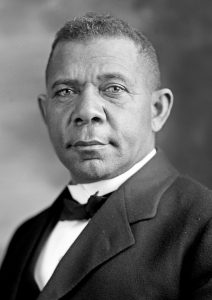
Two African American leaders in the late nineteenth century had different perspectives on newly-developed industrial schools. Booker T. Washington was born an enslaved person in 1856 and grew up in Virginia. He attended the Hampton Institute, whose founder, General Samuel Armstrong, emphasized that “obtaining farms or skilled jobs was far more important to African-Americans emerging from slavery than the rights of citizenship” (Foner, 2012, p. 652-653). Washington supported this view as head of the Tuskegee Institute in Alabama. In his famous 1895 “Atlanta Compromise” speech, Washington did not support “ceaseless agitation for full equality”; rather, he suggested, “In all the things that are purely social we can be as separate as the fingers, yet one as the hand in all things essential to mutual progress” (Foner, 2012, p. 653). Washington feared that if demands for greater equality were imposed, it would result in a white backlash and destroy what little progress had been made.
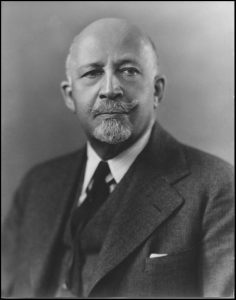
W.E.B. Du Bois viewed the situation differently. Born free in Great Barrington, Massachusetts in 1868, Du Bois was the first African American to earn a Ph.D. from Harvard University. He served as a professor at Atlanta University and helped establish the NAACP in 1905 to seek legal and political equality for African Americans. He opposed Washington’s pragmatic approach, considering it a form of “submission and silence on civil and political rights” (Urban & Wagoner, 2009, p. 176).
The Morrill Acts of 1862 and 1890
In addition to the Freedman’s Bureau, the federal government implemented two legislative acts related to education. The Morrill Act of 1862 gave states 30,000 acres of land for each senator and representative it had in Congress in 1860. The income generated from the sale or lease of this land would provide financial support for at least one agricultural and mechanical (A&M) college, known as a land-grant institution (Urban & Wagoner, 2009). Land-grant institutions were designed to support the growing industrial economy. The second Morrill Act of 1890 required “land-grant institutions seeking increased federal support…to either provide equal access to the existing A&M colleges or establish separate institutions for the ‘people of color’ in their state” (Urban & Wagoner, 2009, p. 188). The Morrill Acts demonstrated how industrialization and westward expansion resulted in increasing involvement of the federal government in education policy to meet national needs.
Critical Lens: The “Value” of Education
The opinions of Booker T. Washington and W. E. B. Du Bois are prevalent in today’s options for education after high school. Some believe that technical schools have a place in society for those who do not choose to, or who are not able to afford, four-year colleges. In essence, that the four-year college experience is not needed to be a contributing member of society. Others believe that one must attend college to expand understanding for future, more “professional” careers. Who is right in these scenarios? What influences where students choose to learn in post-secondary education? It is important to critique the implicit biases we hold regarding others’ educational choices.
Native American Boarding Schools: Cultural Imperialism and Genocide
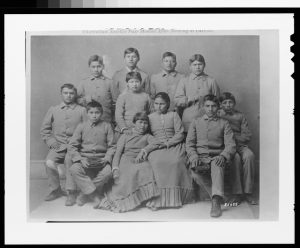
Using its military, the federal government created a number of Native American boarding schools throughout the country. The first and most famous of these was the Carlisle School, founded in Pennsylvania in 1879. The federal government convinced many Native American parents that these off-reservation boarding schools would educate their children to improve their economic and social opportunities in mainstream America. In reality, this experiment was intended to deculturalize Indigenous children. Supervisors at the boarding schools destroyed children’s native clothing, cut their hair, and renamed many of them with names chosen from the Protestant Bible. The curriculum in these schools taught basic literacy and focused on industrial training, intended to sort graduates of these boarding schools into agricultural and mechanical occupations. A total of 25 off-reservation boarding schools educating nearly 30,000 students were created in several western states and territories, as well as in the upper Great Lakes region. Based in ethnocentrism, or the belief of the White, Protestant mainstream culture that they were superior to other cultures, these boarding schools relied on a harsh form of assimilation, a fundamental feature of common schooling.
Critical Lens: Indigenous Boarding Schools in the News
In the summer of 2021, the dark history of Indigenous boarding schools made headlines as Canadian authorities discovered unmarked graves and remains of children[3] killed at multiple boarding schools for Indigenous children. In July 2021, the U.S. launched a federal probe[4] into our own Indigenous boarding schools and the intergenerational trauma they have caused. These boarding schools are one way that education has been used to oppress and deculturize a particular group of Americans.
The Progressive Era
The Progressive Era was defined by social reform, and education was no exception. Many of the philosophies you learned about earlier in this chapter were established in the Progressive Era. Changes in education during this period included varying forms of progressivism, the emergence of critical theory, extending schooling beyond the primary level, and the development of teacher unions.
Differing Approaches to Progressivism
During the Progressive Era’s focus on social reform, different approaches emerged. One group was called administrative progressives, who wanted education to be as efficient as possible to meet the demands of industrialization and the economy. Efficiency involved centralizing neighborhood schools into larger urban systems, allowing more students to be educated for less money. Graded classes, specialized and differentiated subject areas, ringing bells, an orderly daily itinerary, and hierarchical management–with men serving as school board members, superintendents, and principals, and women at the bottom of the rung as teachers–also increased educational efficiency. Educational efficiency required preparing good workers for a rapidly changing economy. Administrative progressives adopted factory models in schools to become better at processing and testing the masses, a continued form of educational assimilation.
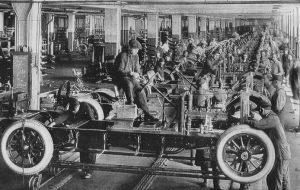
Curricular or pedagogical progressives were focused on changes in how and what students were learning. Many of these progressives saw schooling as a vehicle for social justice instead of assimilation. John Dewey is often referred to as America’s philosopher and the father of progressivism in education. In Democracy and Education, Dewey (1944) theorized two types of learning: “conservative,” which reproduces the status quo through cultural transmission and socialization, and “progressive,” which frames education more organically for the purposes of experiencing “growth” and broadening “potentialities” (p. 41). In this case, “progressive” learning has no predetermined outcome and is always evolving, or progressing. Democratic education, Dewey believed, must build on the existing culture or status quo and free students and adults alike toward conscious positive change based on newly-discovered information, improvements in science, and democratic input from all members of the community, which added legitimacy to a society’s growth.
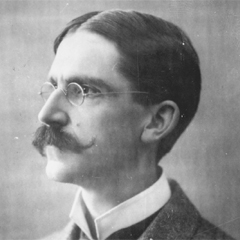
Dewey and his like-minded progressives have often been referred to as social reconstructionists. They believed education could improve society. Dewey recognized “the ability of the schools to teach independent thinking and to the ability of students to analyze social problems” (Kliebard, 1995, p. 170). Dewey did not expect the school to upend society; rather, as institutions that reached virtually all youth, he saw schooling as the most effective means of developing the habits of critical thinking, cooperative learning, and problem solving so that students could, once they became adults, carry on this same activity democratically in their attempts to improve society. Their attempts were often met with contempt because such critique threatened the existing socio-political system, which conservative individuals wished to preserve.
Emergence of Critical Theory
In Germany in 1923, critical theory was developed at The Frankfurt Institute of Social Research. With roots in German Idealism, critical theorists sought to interpret and transform society by challenging the assumption that social, economic, and political institutions developed naturally and objectively. In addition, critical theorists rejected the existence of absolute truths. Instead of blind acceptance of knowledge, critical theorists encouraged questioning of widely accepted answers and challenged objectivity and neutrality, noting that these constructs avoid addressing inequality in political and economic power, social arrangements, institutional forms of discrimination, and other areas. The original Frankfurt School theorists were dedicated to ideology critique and the long-term goal of reconstructing society in order to “ensure a true, free, and just life” emancipated from “authoritarian and bureaucratic politics” (Held, 1980, p. 15).
A decade later amidst the Great Depression, America witnessed the emergence of its own Frankfurt School. In the United States, critical theory was aligned with social reconstructionism and situated in social foundations programs in various academic institutions, including its first department in Columbia University’s Teachers College. Why would this movement find its home in American education? Educators were “a positive creative force in American society” that could serve as “a mighty instrument of…collective action” (Counts, 2011, p. 21). Critique, reflection, and action, often referred to as praxis, are intrinsically educational, and these actions transcend the mere transmission of knowledge and culture. America’s social reconstructionists attempted to cultivate a specialized field that drew from many academic disciplines in order to develop professional teachers’ understanding of how schooling tended to reinforce, evangelize, or perpetuate a given social order. They repudiated a predetermined “blueprint” for training teachers, rejecting “the notion that educators, like factory hands, merely…follow blueprints” (Coe, 1935, p. 26).

When education stops reproducing the status quo, when we self-reflect and become self-critical, when we attempt to produce change and social improvement, when the work of powerful and vested interests is challenged by new knowledge, this is when intellectuals and education become threatening. What developed, and what continues to be a center of conflict today over the issue of education, is a struggle over two polarizing purposes of formal schooling. The first purpose is generally described as the transmission and indoctrination of the values, customs, ideologies, beliefs, and rituals, often controlled by and aligned with more powerful social groups. The second purpose of education, often perceived as more radical, is the view that education should serve as a means of critique and social reconstruction in order to improve society.
Extending Schooling Beyond the Primary Level
While high schools existed in New England towns since the establishment of the Boston Latin Grammar School in 1636, it was not until the early nineteenth century that high schools started appearing in urban areas, and they were not commonly attended until the early twentieth century. While common elementary schooling focused on teaching students morality, a differentiated curriculum in the early twentieth century high schools “reflected a new, largely economic, purpose for education” (Urban & Wagoner, 2009, p. 234). Debates arose around the high school curriculum: should it teach a classical curriculum, or focus on vocational training to meet the needs of the rapidly changing economy in the U.S.? In 1918, the National Education Association published a report called “The Cardinal Principles of Secondary Education” to establish the goals of high school education, including “health, command of fundamental processes, worthy home membership, vocation, citizenship, worthy use of leisure, and ethical character” to prepare students “for their adult lives” by “fitting [them] into appropriate social and vocational roles” (Urban & Wagoner, 2009, p. 271-272). The functionalistic nature of high school also resulted in the development of extracurricular programs including, but not limited to, “athletics,” school “newspapers, and school clubs of various kinds” in order to teach “students the importance of cooperation” and to “serve…the needs of industrial society” (Urban & Wagoner, 2009, p. 272-276). This resulted in the high school becoming a major institutional mechanism in developing the future teenager.
Pause & Ponder
How did these “Cardinal Principles,” published over a century ago, shape your own high school experience?
Changes beyond high school also occurred in the Progressive Era. It was also during this period that the educational ladder expanded to include not only a system of elementary and high schools, but also junior high schools, community colleges, and kindergartens, which had served as separate private institutions since the mid-nineteenth century. Not only were more children attending school at this time, they were attending for longer periods of time. Moreover, patriotism, the abolishment of German language instruction in many schools, and intelligence testing were introduced to education following World War I.
The Development of Teacher Unions
While teaching offered career opportunities for women at the time, their increasing presence in the profession was met with little pay and much exploitation. Female teachers were expected to teach more students, particularly in urban areas where immigration tended to ebb and flow. It was not unusual for teachers to forego their salaries during economic downturns, and they had little or no benefits or rights to due process (which will be discussed in Chapter 5). Male administrators and policymakers typically justified their ill-treatment of teachers by treating them as martyrs for their communities (Goldstein, 2014).
The National Education Association was established in 1857, initially to address the interests of school administrators. Today, it serves as a major interest group for the teaching profession lobbying at all levels of government. The American Federation of Teachers emerged in 1916 as an outgrowth of teacher associations in Chicago. This group joined with organized labor unions, such as the AFL-CIO (The American Federation of Labor and Congress of Industrial Organizations) in order to increase its formative power. Both organizations continue to exist today with state and local chapters.
Stop & Investigate
Check out the websites of the National Education Association[5] and the American Federation of Teachers[6] to learn more about these organizations, what they provide, and how they support active change in the teaching profession.
Post World War II & Civil Rights Era
In the decades following World War II, the U.S. prospered, and education saw many significant shifts, especially focusing on equality of educational opportunities. In this period, ongoing inequalities in educational opportunities led to limited federal funding, Brown v. Board of Education (1954) deemed segregated schools illegal, and other minoritized groups continued to fight for equitable access to education.
Ongoing Inequalities and Federal Funding
The 1945 Senate committee hearings on federal aid to education highlighted ongoing inequities in schooling, as well as the fact that “education was in a state of dire need” of financial resources and more equitable funding (Ravitch, 1983, p. 5). Most school funding came from property taxes, which continued to exacerbate inequities, as will be discussed in Chapter 4. Other changes took place following World War II to worsen already existing inequalities. After the War, “white flight” from the inner city to suburbs resulted in highly-segregated communities, falling urban property values, and rising suburban property values. White flight contributed to greater de facto segregation, and it increased segregated schooling and enhanced inequalities in school funding.

In response, the federal government offered limited assistance. The National School Lunch Program was passed in 1946 in order to enhance learning through better nutrition. In response to the anxiety created over the launching of the Russian satellite Sputnik, Congress passed the 1958 National Defense Education Act, which provided increased federal funding for math, science, and foreign languages in public schools. While these examples are not exhaustive, they illustrate the piecemeal federal approach to funding public schools: if a problem was perceived as a crisis and reached the federal legislative agenda, it was more likely to attract congressional funding.
In 1965, President Johnson worked with Congress in order to pass what became known as the Elementary and Secondary Education Act (ESEA). The ESEA served as the largest total expenditure of federal funds for the nation’s public schools in history. Aligned with Johnson’s war against poverty, the purpose of the law included increased federal funding for school districts with high levels of poor students. The law included six Titles (sections). Title I served as the primary legislative focus and included about 80 percent of the law’s total funding. Title I funds were distributed to poorer schools districts in an attempt to remedy the unequal funding perpetuated by reliance on property taxes. Title VII, or the Bilingual Education Act of 1968, provided funds for students who were speakers of languages other than English. The other Titles provided federal funding for school libraries, textbooks and instructional materials, educational research, and funds to state departments of education to help them implement and monitor the law. This resulted in the growth of state power alongside the expansion of federal power since states gained greater oversight of federal programs and mandates.
Separate is Not Equal
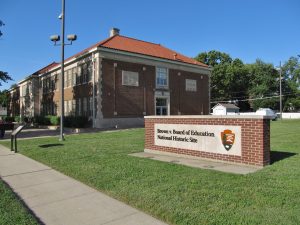
In 1896, Plessy v. Ferguson established the separate-but-equal doctrine. In its decision, the U.S. Supreme Court circumvented the original intent of the Fourteenth Amendment’s equal protection clause, which was intended to give all persons equal rights under the law. The Court strategically interpreted the clause to mean that as long as segregated public facilities were equal, they were constitutional.
The 1954 Brown v. Board of Education of Topeka decision ended the separate-but-equal doctrine. The National Association for the Advancement of Colored People (NAACP) found five plaintiffs representing four different states (Delaware, Kansas, South Carolina, and Virginia) and the District of Columbia to challenge segregated primary and secondary schools. All five cases were heard under the name Brown v. Board of Education of Topeka. The Court ruled unanimously in 1954 to overturn Plessy. In his majority decision, Chief Justice Earl Warren made the following conclusion:
Segregation of white and colored children in public schools has a detrimental effect upon the colored children. The impact is greater when it has the sanction of the law, for the policy of separating the races is usually interpreted as denoting the inferiority of the Negro group…Any language in contrary to this finding is rejected. We conclude that in the field of public education the doctrine of ‘separate but equal’ has no place. Separate educational facilities are inherently unequal. (347 U.S. 483, 1954)
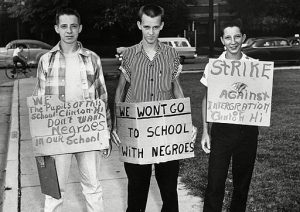
After ruling segregation unconstitutional, the Court then had to consider a reasonable set of remedies in order to ensure desegregation. In 1955, The Court ruled in Brown v. Board of Education of Topeka II that desegregation would occur “on a racially nondiscriminatory basis with all deliberate speed.” This vague language, particularly the phrase “all deliberate speed,” contributed to chaos and enabled state resistance, with each state and district deciding its own approaches or avoidance thereof (Ryan, 2010).
When integration did take place, it occurred on white terms. Integration resulted in Black teachers losing their jobs and the closing of their schools. Black students were integrated into White schools and were suddenly being taught by White teachers while being subjected to an all-white curriculum. Black students and teachers alike experienced “cultural dissonance that exacerbated student rebelliousness, especially among African American boys.” Furthermore, “the actual implementation of integration plans and court orders remained largely in the hands of white school boards” (Fairclough, 2007, p. 396-400). Due to massive resistance to desegregation, Congress passed the 1964 Civil Rights Act as an attempt to force compliance. Following the passage of ESEA, which provided millions of federal dollars to each state, the federal government could now threaten non-compliant states (and school systems) by withholding these large sums of money annually under Title VI of the act.
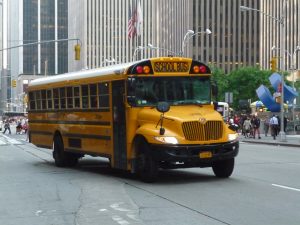
Many urban school systems began drawing plans to bus white and non-white children to schools across neighborhoods in order to increase racial diversity in all of a district’s schools (i.e., Swann v. Charlotte-Mecklenburg Board of Education, 1971). However, in 1974 in Milliken v. Bradley, the U.S. Supreme Court decided schools were not responsible for desegregation across district lines if their own policies had not explicitly caused the segregation. President Nixon, who opposed inter-district busing, argued that in order to protect suburban schools, inner city schools should be given additional funds and resources to compensate urban school children from the harms of past segregation and the legacies of inequitable funding (LCCHR, n.d.). According to Ryan (2010), “Nixon’s compromise, broadly conceived to mean that urban schools should be helped in ways that [did] not threaten the physical, financial, or political independence of suburban schools… continues to shape nearly every modern education reform” (p. 5). The Milliken decision halted any possibility to integrate schools effectively. Due to the existence of de facto segregation, there was no significant way to integrate students unless they crossed district boundaries.
Nixon also worked with Congress to pass the 1974 Equal Educational Opportunities Act. This legislation embodied the rights of all children to have equal educational opportunities, and it included particular consideration to students with limited English proficiency (LEP). The EEOA’s applicable breadth is exemplified the law’s intent, which prohibits states from denying equal educational opportunity on account of race, color, sex, or national origin. Moreover, the EEOA prohibits states from denying equal educational opportunity by the failure of an educational agency to take appropriate action to overcome language barriers that impede equal participation by its students in its instructional programs.
Increasing Access to Education for Minoritized Groups
The African American Civil Rights Movement gave hope to Mexican and Asian Americans, as well as women, people with disabilities, and to a lesser extent, Native Americans. Like African Americans, Mexican Americans utilized the courts to overturn segregated schools in the southwest, particularly in Texas and California. In fact, the earliest segregation case was filed by Mexican Americans in 1931 in Lemon Grove, California[7]. Other cases would be filed in the 1940s and 1950s, including Mendez v. Westminster[8] in 1947.
Pause & Ponder
When we talk about the history of desegregation in U.S. education, Brown v. Board of Education in 1954 is often the first case that comes to mind. However, desegregation cases occurred decades before in the 1930s in California. Why is desegregation of Black schools in the formal curriculum but desegregation of Latino/a communities is not? In your formal education, what have you learned about the fights for equality amongst various groups, and which groups’ voices seem to be missing?
A class action suit in San Francisco, California, led to legal rights for English Language Learners. In Lau v. Nichols (1974), parents of approximately 1,800 non-English-speaking Chinese students alleged that their Fourteenth Amendment’s equal protection rights had been violated since they could neither understand nor speak English, the language of instruction, which meant their children were not benefitting from educational services. The U.S. Supreme Court concluded that the school district violated Section 601 of the Civil Rights Act of 1964, which banned discrimination based “on race, color, or national origin” in “any program or activity receiving federal financial assistance.” As recipients of federal funds, schools were required to respond to the needs of English language learners effectively, whether this meant implementing bilingual education, English immersion, or some other method of instruction. The Court concluded, “There is no equality of treatment by providing students with the same facilities, textbooks, teachers and curriculum, for students who do not understand English are effectively foreclosed from any meaningful education.”
As discussed in Chapter 2, children with special needs also received increased access to education, who historically had been excluded from many educational opportunities. In 1972, Pennsylvania Association for Retarded Children (PARC) v. Commonwealth of Pennsylvania[9], guaranteed the rights of disabled children to attend free public schools. Congress followed up in 1973 by enacting the Rehabilitation Act, which guaranteed civil rights for people with disabilities, including appropriate accommodations and individualized education plans to tailor education for students based on their unique needs. Providing children with disabilities in least restrictive settings was implemented in the 1975 Education for All Handicapped Children Act.
Women continued to fight for equal pay and respect in the workplace, and some success was achieved in the passage of Title IX as one of the amendments to the 1972 Higher Education Act. Title IX “prohibits discrimination on the basis of sex in any federally funded education program or activity” in “colleges, universities, and elementary and secondary schools,” as well as to “any education or training program operated by a receipt of federal financial assistance,” including intercollegiate athletic activities (The U.S. Department of Justice, n.d.).
Native Americans were able to enjoy greater control in limited ways over reservation schools including, but not limited to, the Rough Rock Demonstration School (recently renamed Rough Rock Community School[10]), located in northeastern Arizona. A collaboration between the Office of Economic Opportunity and the Bureau of Indian Affairs, the school opened in 1966 intending to give “Navajo parents…control” over “the education of their children” and to “participate in all aspects of their schooling.” Moreover, these efforts served as an “attempt to preserve the Navajo language and culture,” which was “in contrast to the deculturalization efforts of the nineteenth and early twentieth centuries” (Spring, 2008, p. 394). Despite the fact that the history of federal and Native Indian relations consisted in genocide, relocation, dispossession, and controlled boarding school experiments, Rough Rock Demonstration School continues to provide an example of Navajo empowerment and a locally developed form of Native cultural redemption.
The 1980s and Beyond
In the 1980s and beyond, education saw increasing federal supervision and support, though ultimate control of education still remained with individual states. In this period, the Department of Education was established, A Nation at Risk led to standards-based reform like No Child Left Behind, and social emotional learning emerged.
Establishing the Department of Education
While the federal government has no constitutional authority over public education, its power and influence over schooling has reached a pinnacle since the 1980s. In 1979, President Jimmy Carter created the federal Department of Education. Ronald Reagan, who succeeded Carter, tried and failed to abolish it. Reagan’s neo-conservative followers largely consisted of traditionalists and evangelicals. The traditionalists believed moral standards and respect for authority had been declining since the 1960s, while evangelicals (also known as the Religious Right) were concerned by increasing U.S. secularism and materialism (Foner, 2012). For example, in Engel v. Vitale (1962), the U.S. Supreme Court ruled that directed prayer in public schools was a violation of the First Amendment’s Establishment Clause, which forbids the state (public schools and their employees) from endorsing or favoring religion. While the Religious Right saw this decision as taking God out of America’s public schools, the Court viewed separation of church and state as necessary to protect religious freedoms from government intrusion. As established earlier in this chapter, however, the moral values taught in the public schools were often based on or connected to Protestant Christianity, so complete separation of church and state in schools was impossible.
Pause & Ponder
Not all people agree with having a Department of Education. Why would the federal government choose to abolish it? What would be the benefits and drawbacks of keeping the Department of Education?
A Nation at Risk and Standards-Based Reform
In 1981, Reagan created the National Commission on Excellence in Education to address the perceived problems of educational decline. In 1983, the commission released a 71-page report entitled A Nation at Risk. The authors of the report, who were primarily from the corporate world, declared, “American students never excelled in international comparisons of student achievement and that this failure reflected systematic weaknesses in our schools and lack of talent and motivation among American educators” (Berliner & Biddle, 1995, p. 3). However, A Nation at Risk was somewhat “sensational” (Urban & Wagoner, 2009, p. 402), containing numerous claims that were uncorroborated or misleading generalizations as a pretense for a larger political agenda intended to discredit public schools and their teachers.
Developing the perception that America’s schools were in crisis, A Nation at Risk justified a top-down, punitive approach to school reform. While standards-based reform had been around for several years as primarily a state issue, it “provided new theories about ‘systemic’ reform, which emphasized renewing academic focus in schools, holding teachers accountable for educational outcomes, measured by students’ academic achievement, and aligning teacher preparation and pedagogical practice with content standards, curriculum, classroom practice, and performance standards” (DeBray, 2006, p. xi).
Pause & Ponder
What are some of your own experiences with standards-based reform? How has increasing standardization of schools helped or hurt your own learning experience?

The No Child Left Behind Act (NCLB, 2001) was an example of standards-based reform. As a bipartisan-passed reauthorization of the 1965 Elementary and Secondary Education Act, it was “the first initiative to truly bring the federal government as a regulator into American public education” (Fabricant & Fine, 2012, p. 13). Before, the federal government’s outreach typically extended only to funding; now, NCLB would hold schools, teachers, and students accountable for passing numerous standardized tests given annually in math and reading in grades 3-12. The law also required states to test English language learners for oral, written, and reading proficiency in English each year.
Critiques of NCLB include the acute focus on standardized testing and teaching to the test, uniform curricula that have little or no connection to an increasingly diverse student population, and the punitive nature of the law on students, teachers, and administrators. Madaus et al. (2009) asserted that testing “is now woven into the fabric of our nation’s culture and psyche,” which is evidenced by the fact that even “the valuation of homes in a community can increase or decrease based on these rankings” (p. 4-5). The most problematic nature of NCLB is its supporters’ assumption that uniformity, standardization, centralization, and punitive measures can compel learning and decrease achievement gaps. Assumptions that all children learn uniformly in all respects reveals a lack of understanding of the complexity of the learning process and the various demographic differences among children in a diverse society, including cultural, language, and ability differences.
CRITICAL LENS: STANDARDIZED TESTING
In a society experiencing greater diversity, it is more important than ever to realize how culture plays a significant role in shaping children’s school experiences, making standardized assessments all the more problematic as they tend to be culturally biased. Therefore, relying on standardized assessments in making conclusions about student achievement (or lack of achievement) make it all the more difficult for teachers to respond appropriately to the cognitive abilities of their students. Rote memorization and test preparation skills can easily inhibit creativity and imagination, not to mention the fact that this kind of educational focus is teacher-centered, less dynamic, and assimilatory.
In 2015, the No Child Left Behind Act (originally the Elementary and Secondary Education Act of 1965) was reauthorized as the Every Student Succeeds Act (ESSA). The law:
- Advances equity by upholding critical protections for America’s disadvantaged and high-need students.
- Requires that all students in America be taught to high academic standards that will prepare them to succeed in college and careers.
- Ensures that vital information is provided to educators, families, students, and communities through annual statewide assessments that measure students’ progress toward those high standards.
- Helps to support and grow local innovations, including evidence-based and place-based interventions developed by local leaders and educators.
- Sustains and expands investments in increasing access to high-quality preschool.
- Maintains an expectation that there will be accountability and action to effect positive change in our lowest-performing schools, where groups of students are not making progress, and where graduation rates are low over extended periods of time (U.S. Department of Education, n.d.).
By specifically tying federal funds to standardized assessments, standardized curricula, and accountability measures, along with requiring states and state education agencies to devote extraordinary resources toward fulfilling these mandates through oversight, America’s public schools were being governed by the federal government like never before. Increased federal influence illustrates the underlying belief that if the U.S. is going to maintain economic superiority and global competitiveness, public schooling must become a national responsibility. Contemporary goals focusing on preparing children to compete globally are significant for a number of reasons, not the least of which include the evolving nationalization of our public schools and the simultaneous loss of local authority and discretion over fundamental matters related to student learning.
Social Emotional Learning
Recently, educators have advocated for a more holistic approach to education beyond testing. Social emotional learning (SEL) is “the process through which we learn to recognize and manage emotions, care about others, make good decisions, behave ethically and responsibly, develop positive relationships, and avoid negative behaviors” (Edutopia, 2011, para. 3). Advocates of SEL note that these skills will support students’ personal development and academic performance simultaneously. Early pilots of SEL-influenced approaches to education occurred in the 1960s in New Haven, Connecticut with two low-achieving schools serving mostly African American students. By the early 1980s, these two schools’ academic performance were above the national average. In 1994, the Collaborative to Advance Social and Emotional Learning (CASEL) was established, and Goleman’s book Emotional Intelligence: Why It Can Matter More than IQ brought this concept into popular culture (Edutopia, 2011). ASCD’s “Whole Child Approach” continues to advocate for education that keeps students healthy, safe, engaged, supported, and challenged (ASCD, n.d.).
Pause & Ponder
What social emotional learning (SEL) skills did you learn at school or wish you learned? How will this impact your future classroom instruction?
Conclusion
Education in the United States has a complicated past entrenched in religious, economic, national, and international concerns. In Colonial America, Puritans in Massachusetts knew education would teach children the ways of religion and laws, vital to survival in a new world. Meanwhile, the Middle and Southern Colonies viewed education as a commodity for the wealthy families who could afford it. After the American Revolution, Federalists, Anti-Federalists, and Democratic-Republican Societies all had different perceptions of how schools should be organized to support our newly-established independent nation. In the Early National Era, common schools, normal schools, and higher education grew as education became more widely established. Following the Civil War, the federal government was increasingly involved in education, including the temporary creation of the Freedmen’s Bureau and subsequent federal funding of agricultural and mechanical colleges with the passage of the Morrill Acts. In the Progressive Era, efforts to maximize the efficiency of educational systems and to utilize education as a venue for social reform prevailed. After World War II, equitable access to education became a primary focus, as “separate-but-equal” doctrines were overthrown and schools grappled with institutional discrimination against non-White students, students with disabilities, women, and English Learners. The 1965 Elementary and Secondary Education Act provided federal funds to public schools, while states and local school districts continued to exercise considerable discretion over curriculum, assessments, and teacher certification. In the 1980s and beyond, increased pressures for standardization and accountability resulted in standards-based reform, including the No Child Left Behind Act in 2001. More recently, education has been leveraged to support all of a students’ developmental needs, not just academic. Common educational philosophies including perennialism, essentialism, progressivism, and social reconstructionism reflect varying beliefs about the roles education should fill.
Like learning, teaching is always developing; it is never realized once and for all. Our public schools have always served as sites of moral, economic, political, religious and social conflict and assimilation into a narrowly defined standard image of what it means to be an American. According to Britzman (as quoted by Kelle, 1996), “the context of teaching is political, it is an ideological context that privileges the interests, values, and practices necessary to maintain the status quo.” Teaching is by no means “innocent of ideology,” she declares. Rather, the context of education tends to preserve “the institutional values of compliance to authority, social conformity, efficiency, standardization, competition, and the objectification of knowledge” (p. 66-67).
It should be no surprise then that contemporary debates over public education continue to reflect our deepest ideological differences. As Tyack and Cuban (1995) have noted in their historical study of school reform, the nation’s perception toward schooling often “shift[s]… from panacea to scapegoat” (p. 14). We would go a long way in solving academic achievement and closing educational gaps by addressing the broader structural issues that institutionalize and perpetuate poverty and inequality.
- https://www.pbs.org/onlyateacher/john.html ↵
- https://iep.utm.edu/freire/ ↵
- https://www.bbc.com/news/world-us-canada-57592243 ↵
- https://www.npr.org/2021/07/11/1013772743/indian-boarding-school-gravesites-federal-investigation ↵
- https://www.nea.org/ ↵
- https://www.aft.org/ ↵
- https://www.zinnedproject.org/news/tdih/lemon-grove-incident/ ↵
- https://www.zinnedproject.org/news/tdih/mendez-v-westminster/ ↵
- http://www.pilcop.org/wp-content/uploads/2012/04/PARC-Consent-Decree.pdf ↵
- http://www.roughrock.k12.az.us/default.htm ↵
The fundamental nature of knowledge, reality and existence; in the case of a philosophy of education, what one believes to be true about the essentials of education.
Educational philosophy suggesting that human nature is constant, and that the focus of education should be on teaching concepts that remain true over time.
Educational philosophy that suggests that there are skills and knowledge that all people should possess.
Educational philosophy emphasizing real-world problem solving and individual development, with the teacher serving as a "guide on the side."
Significant 20th century educator also known as the father of progressivism. Advocate for student-centered, problem-based learning. Published several books outlining the role of democracy in education to create thoughtful, productive citizens.
Educational philosophy asserting that schools, teachers, and students should take the lead in addressing social problems and improving society.
Brazilian philosopher and educator who was one of the most influential thinkers in the ideas behind social reconstructionism. Believed that education should be student-centered and avoid the "banking model" of teachers depositing information into students. Wrote several books, including "Pedagogy of the Oppressed."
First compulsory education law in the New World.
Required towns of fifty or more families to hire a schoolmaster to teach children basic literacy. Also known as the Old Deluder Satan Act.
Required towns of fifty or more families to hire a schoolmaster to teach children basic literacy. Also known as the Law of 1647.
Model of schooling in Colonial America in which parents sent children to a local woman who would teach basic literacy skills for a small fee.
Model of schooling in Colonial America to teach boys subjects like classical literature, reading, writing, and math in preparation to attend Harvard University. First established in Boston in 1635.
Model of schooling in Colonial America in which a highly educated minister opened his home to young scholars and often taught secular subjects.
Model of schooling in Colonial America established when an affluent individual made provisions in his or her will, including land, to construct and manage a school for the poor. Also called endowed free schools.
Model of schooling in Colonial America involving schools being built in abandoned fields in rural areas to offer affordable education to students. Teachers received payment from families and boarded with families. Also called rate schools, subscription schools, fee schools, and eventually district schools.
American Revolutionary Era group supporting mass schooling for nationalistic purposes, such as preserving order, morality, and a nationalistic character, but opposing tax-supported schooling. Included Alexander Hamilton, George Washington, John Adams, and Noah Webster.
Federalist who supported mass schooling and wrote his "American Spelling Book" in 1783.
Political group in the American Revolutionary Era that opposed a strong central government, preferring instead state and local forms of government. Included Thomas Jefferson.
Anti-Federalist and third U.S. president who proposed a tiered schooling model in Virginia.
Political group in the American Revoutionary Era that supported universal, government-funded schooling.
Members of these political clubs included artisans, teachers, ship builders, innkeepers, and working class individuals.
Elementary schools where all students--not just wealthy boys--could attend for free. Developed in the 1800s by Horace Mann.
Massachusetts’s first Secretary of Education and leader of the common school movement.
Teacher training institutions championed by Horace Mann that arose during the Common School Movement.
First well-known teacher of the Common School Movement and one of the normal schools’ first teachers.
Distributed food, clothing, and medical aid to formerly enslaved people and poor Whites and created over 1,000 schools throughout the southern states after the Civil War.
Post-Civil War schools built for Black Americans in the South; focused on vocational or trade skills.
Born an enslaved person in Virginia. Attended the Hampton Institute and later led the Tuskegee Institute. Famous for his 1895 "Atlanta Compromise" speech.
First African American to earn a Ph.D. at Harvard University. Helped establish the NAACP. Known for "The Souls of Black Folk," among other writings.
National Association for the Advancement of Colored People; founded in 1905 to seek legal and political equality for African Americans.
Gave states 30,000 acres of land for each senator and representative it had in Congress in 1860. The income generated from the sale or lease of this land would provide financial support for at least one agricultural and mechanical (A&M) college, known as a land-grant institution.
Required land-grant institutions seeking increased federal support to either provide equal access to the existing A&M colleges or establish separate institutions for the People of Color in their state.
Judging or evaluating another culture based on your own culture.
Group in the early 1900s who wanted education to be as efficient as possible to meet the demands of industrialization and the economy.
Group in the early 1900s focused on changes in how and what students were learning; saw schooling as a vehicle for social justice instead of assimilation. Also called pedagogical progressives.
Group in the early 1900s focused on changes in how and what students were learning; saw schooling as a vehicle for social justice instead of assimilation. Also called curricular progressives.
Group of progressive educators, like John Dewey, who ascribed to the educational philosophy of social reconstructionism, meaning they believed education could improve society.
Approach of constructing meaning through recognizing issues of power, access, and equity; often involves questioning and challenging the status quo.
Largest labor union in the U.S., established in 1857 to represent educators.
Second largest labor union for teachers in the U.S., founded in Chicago in 1916.
Part of Civil Rights Act of 1964 that bans bans discrimination based on sex in places such as schools.
Established in 1979 by President Carter to provide federal oversight of education, though individual states still preserved primary control of educational decisions.
71-page report released in 1983 that sensationalized a "crisis" in American schooling that led to standards-based reform.
Standards-based reform passed in 2001 as a reauthorization of the 1965 Elementary and Secondary Education Act. Increased educational accountability through standardized testing.
2015 reauthorization of the Elementary and Secondary Education Act (1965) and No Child Left Behind Act (2002). Shifted accountability provisions to individual states.
Process through which students learn to recognize and manage emotions, care about others, make good decisions, behave ethically and responsibly, develop positive relationships, and avoid negative behaviors.

